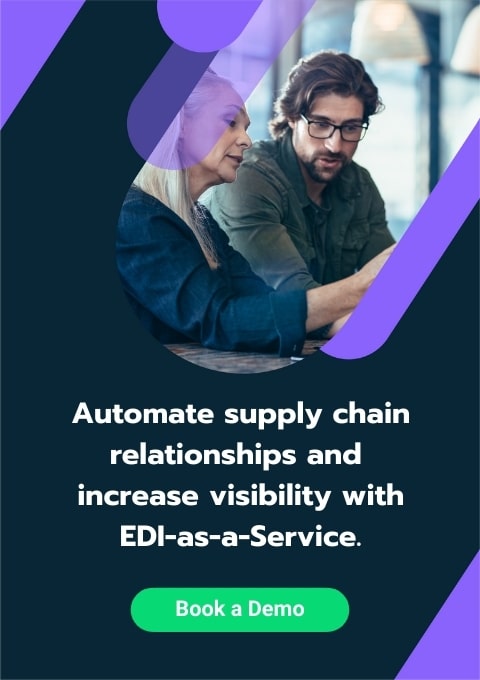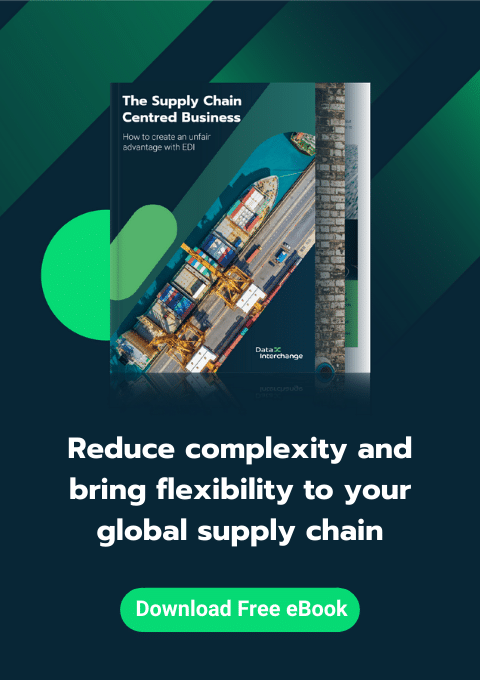The Future of EDI: Looking Beyond 2025
Electronic Data Interchange (EDI) has enabled the free flow of information between different businesses within a single supply chain for decades. However, despite its importance throughout B2B communications, the future of EDI is still uncertain.
Even with all of the advantages they can offer, legacy solutions have struggled to fully satisfy the demand for seamless supply chain outcomes at the core of EDI’s mission statement. Incompatibility with internal systems and numerous protocols can create manual process information silos that result in limited visibility. Although limitations within internal supplier systems will always present a challenge, cloud-based tools and managed services are now in a position to minimise the impact of those limitations and significantly simplify operations.
However, whether EDI is the solution to these challenges long-term is still unclear. Web services have been singled out as potential replacements for EDI, as well as APIs — which have been touted as a cheaper, faster and more flexible alternative. However, new solutions are likely to augment rather than replace modern EDI systems, helping to create a new category of EDI.
After pioneering industry-leading EDI solutions for decades, our mission at Data Interchange is to now create a new category of EDI that we call “EDI-as-a-Service.” In this article, we’ve bought together all those years of experience to examine what the future of EDI will look like beyond 2025, and demonstrate why the future of EDI will be defined by flexible and multi-faceted solutions such as EDI-as-a-Service.
Suggested reading: If you want to learn more about how EDI-as-a-Service can deliver a competitive advantage, check out our eBook — The Supply Chain Centred Business.
Current EDI solutions
Before we can look to the future of EDI, it’s essential to consider what’s happening in the present, and why existing EDI integrations have left the future so uncertain. As things stand, legacy EDI systems cover three basic types of EDI:
- Direct EDI: Direct, or point-to-point EDI, is a typically on-premises deployment that creates a direct line of communication between trading partners, utilising pre-agreed EDI standards and protocols.
- EDI-via-VAN: EDI-via-value-added-networks is the most commonly used EDI solution right now thanks to both its positioning in the cloud and the oversight of EDI experts, or VAN providers, who implement ‘mailboxes’ from which documents can be sent and received.
- Web EDI: Web EDI takes supply chain simplicity one step further by providing EDI access through Web Portals for supply chain partners that cannot exchange traditional EDI messages. Web EDI is often deployed in tandem with the other types of EDI mentioned to add flexibility. However, on its own Web EDI lacks the sophistication to be a true replacement for other types of EDI.
Why EDI needs an update
To understand why legacy EDI needs updating, you only have to look at the impact EDI implementation is intended to have on supply chains and where it falls short.
EDI was created to enable enhanced visibility and optimisation, although has been unable to fully deliver on either of these due to:
- Ongoing manual processes: Limitations within internal supplier systems, along with the need to accommodate a range of EDI protocols and standards can lead to the creation of semi-automated processes within legacy EDI solutions. This means ongoing manual processes that cost time and money, as well as leaving data open to corruption.
- Incompatible protocols and standards: A need to accommodate wide-ranging protocols and standards can result in supply chain complexities, as well as leaving the oversight EDI claims to facilitate still out of reach.
- Complex onboarding: Especially where partners have little to no existing EDI experience, onboarding can be a difficult process that takes several months.
Taken together, these issues hinder the simple and flexible outcomes EDI aims to provide, leaving the future of EDI in supply chain processes far from guaranteed.
Suggested reading: if you’re interested in learning more about the history of legacy EDI, check out our blog — What is EDI: The History and Future of Electronic Data Interchange
Potential alternatives to EDI
EDI has a specific role within supply chain management. However, there have been suggestions that alternative solutions may be ‘the future’ of supply chain management. The two major alternative suggestions are:
- APIs
- Web services
APIs enable direct communication between applications. Web services deliver the same outcomes across a network. Cloud-based integration platforms like iPaaS use both and are increasingly being applied within a supply chain management context. In fact, APIs are projected to facilitate 50% of B2B transactions by 2023.
Like EDI, these software intermediaries enable two separate applications to communicate with each other through the use of protocols. Unlike EDI, both rely on broadly used protocols such as SOAP or REST. This leads to some undeniable benefits, including:
- Ease of integration
- Effective complementation with third-party products or services
- The removal of human processes similar to EDI
- Greater flexibility
The limitations of API and web services
Although API vs EDI or web services is an interesting questions, a closer look reveals a number of issues that emerge from standalone API or web service implementations, such as:
- A lack of standards: API and web services work with familiar protocols, but there’s no standardisation within this, either at the design stage or within data exchanges. VDA and Odette are both working on a set of API standards for the automotive sector, which provides an example of how this challenge might be overcome. However, at the moment, organisations often find themselves reinventing the wheel with every implementation.
- Incompatibility with legacy operations: APIs and web services have limited compatibility with legacy and older operations. This means that without overhauling entire existing infrastructures and expecting suppliers to do the same, implementation can be a struggle, if not impossible.
- Not made for supply chains: Unlike EDI, APIs and web services aren’t made with supply chain processes in mind, meaning that, while they can facilitate generalised data exchanges, they are not as well-positioned to manage global supply chains and the specific communication challenges that trading partners often come up against.
Each of these limitations can lead to inefficient processes, keeping smooth supply chain communication out of reach. Fundamentally, neither APIs or web services, on their own, actually solve the major problems related to integrations or the need to overcome barriers created by internal supplier systems. This isn’t to say that APIs and web services don’t have their place, simply that they’re fundamentally different solutions that have the potential to cause more complicated and convoluted processes than EDI ever has.
EDI-as-a-Service: The real game-changer in EDI
Although APIs and web services deliver valuable integration capabilities, they aren’t a complete solution. What’s more, when applied within a supply chain context, they can be seen as additional channels by which information can be exchanged within a broader EDI framework. Realistically, you could think about both as simply another EDI protocol.
Fundamentally, the future of EDI is about creating more flexible and transparent systems that can seamlessly accommodate a wide range of inputs while ensuring automated and controllable outcomes. What’s needed is:
- A single-source-of-truth: You need all of your supply chain communication running through a single platform to enable accurate planning and communication.
- Simple onboarding: Flexible use of multiple types of EDI let you accommodate a full range of EDI standards and make onboarding new supply chain partners easy — ensuring the flexibility and high adoption rates needed to create a single-source-of-truth platform.
- Analytics: Your system needs to deploy cloud-based tools to sort data across your platform and enable effective planning based on supply chain visibility.
- Managed support: Making all of this possible requires access to on-demand expertise when needed to support your requirements, or those of your supply chain parents.
The development of these multiple outcome-orientated components is what we call EDI-as-a-Service. Although our focus has been on uniting all of the different EDI protocols and standards, looking further into the future raises interesting questions about the integration of APIs and web service solutions. However, we do not believe that the solution to EDI challenges will be the abandonment of EDI protocols and standards. Instead, we see the future defined by a fluid accommodation of a wider range of options within a flexible framework.
The real game-changer in EDI is moving beyond disparate and dislocated systems to create a flexible and holistic solution that focuses on outcomes rather than a specific protocol. Ironically, by embracing a wider range of protocols and standards, all of these different capabilities can be united within a single solution and provide the visibility and flexibility that EDI has always promised.

Suggested reading: If you want to learn more about ED-as-a-Service and Supply Chain Management, check out our blog — Our Plan at Data Interchange to Change EDI and Supply Chain Management
Grab the future of EDI today
If EDI is going to continue to stand out amongst its competitors, it needs to bring something new to the table, not only addressing legacy EDI deficiencies but also directly plugging gaps that APIs and other alternatives have thus far failed to overcome.
At Data Interchange, we’ve used three decades of experience to develop EDI-as-a-Service to achieve precisely these results, using SaaS tools to simplify every stage of your EDI journey, while guaranteeing the oversight that you need to enable your EDI implementations to continue driving positive business outcomes into 2025 and beyond. If you’re looking to transform your supply chains with an effective, modern EDI solution, get in touch today.






























































































































